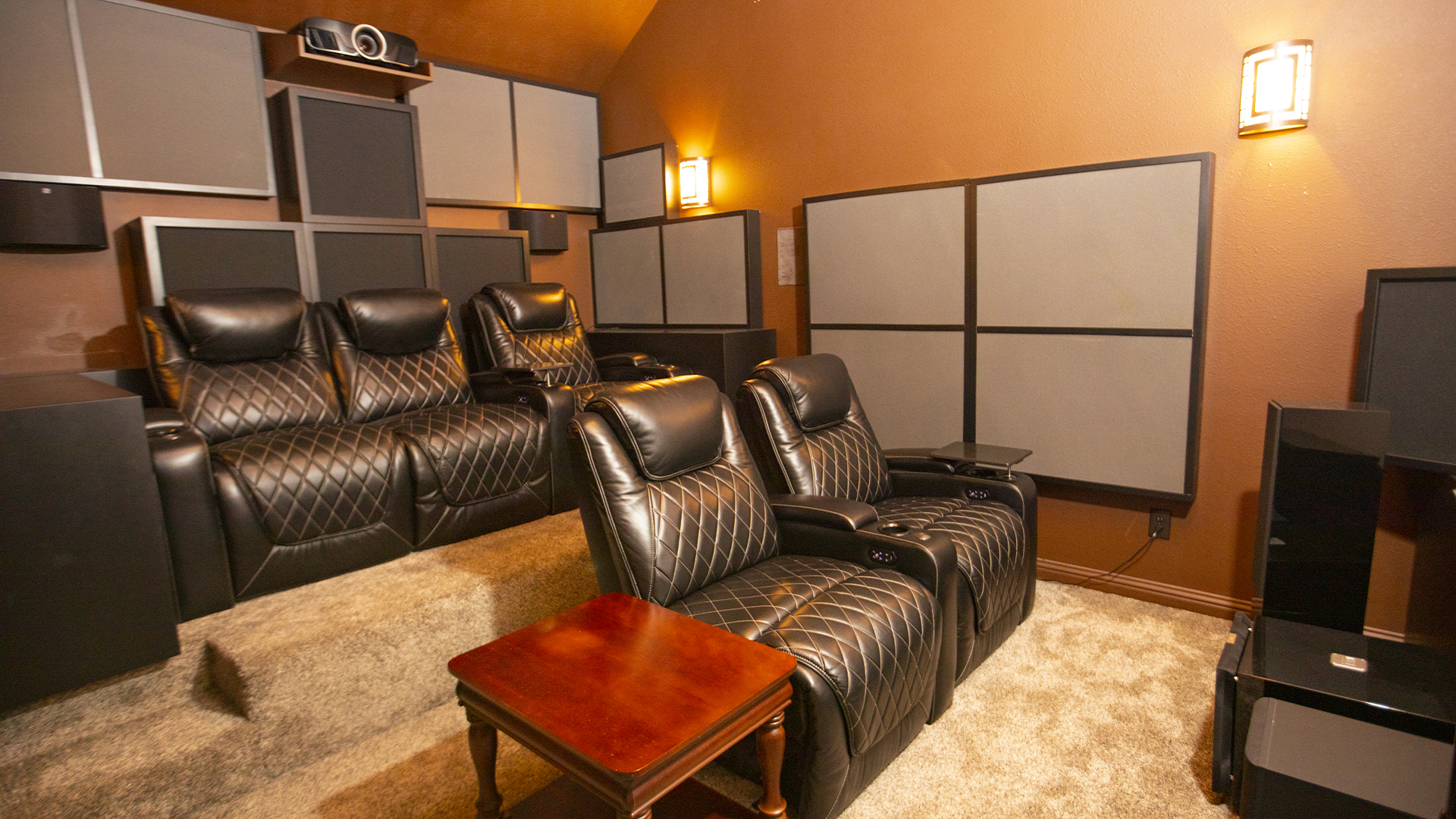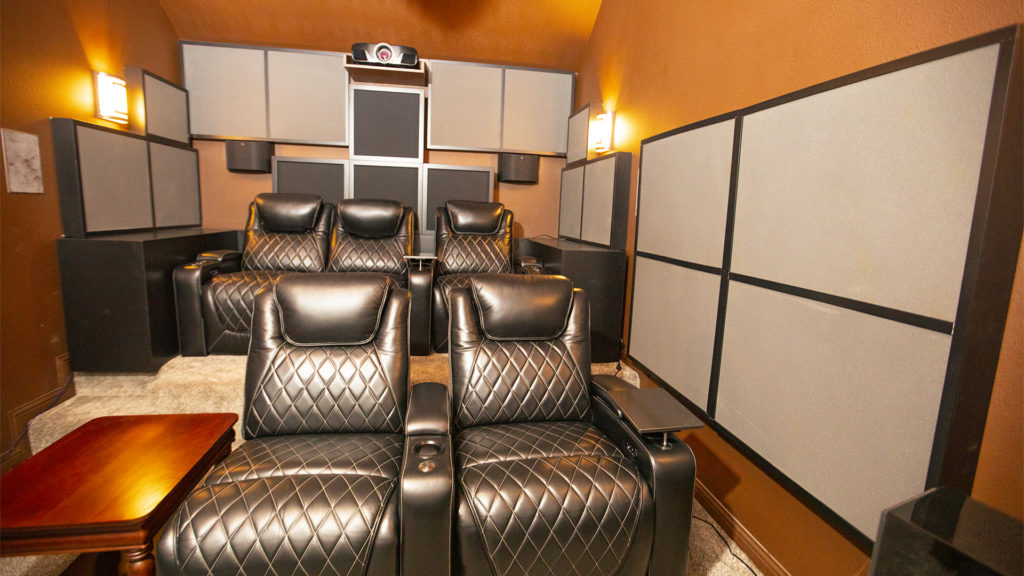
Table of Contents
Purpose of Home Cinema Wall Panels
The search phrase home cinema wall panels is a direct effort to treat the reverberation times in small home theaters. Reverberation is defined as to how long a sound stays around within the room after it has been sung, spoken, or played. It is a measure of decay. Home cinema wall panels can be a successful treatment type if the absorption technology used exhibits the proper rate and level of absorption in the 125 hz. – 500 hz. frequency range.
To manage reverb successfully using a home cinema wall panel, one must be able to absorb 75% of all octave bands from 125 hz. – 500 hz. A home cinema wall panel will need to be 6 – 8″ deep to achieve this objective. Stay away from the industry standard of 1 – 2″. They are cheap but ineffective.
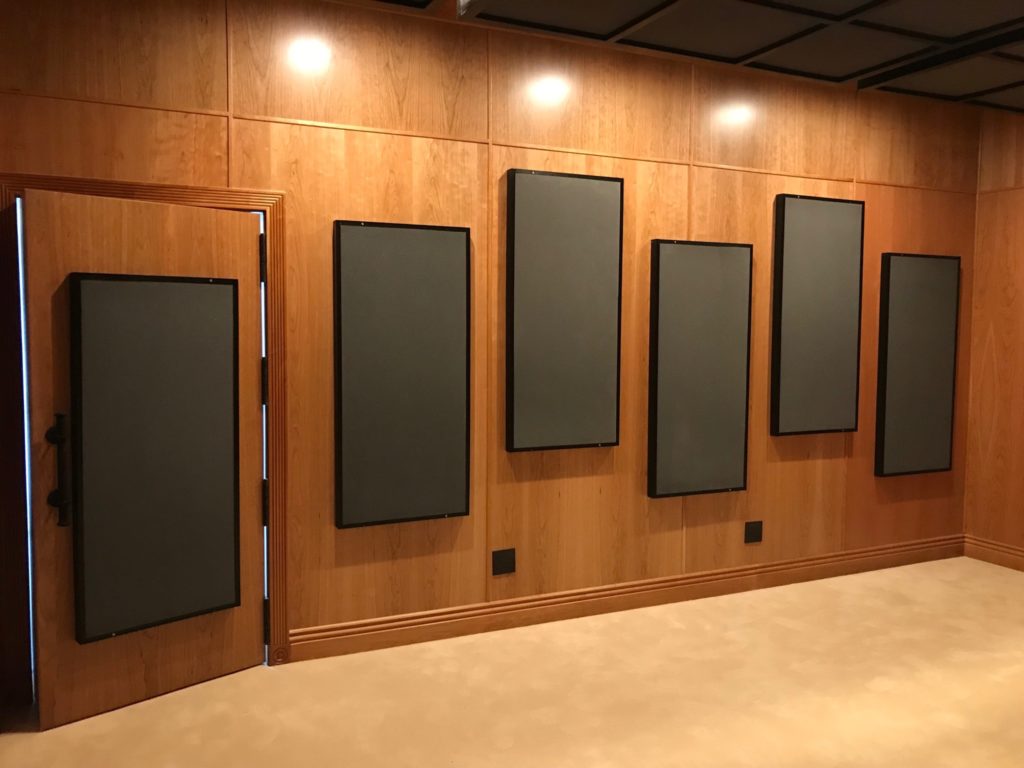
Understanding Reverberation and Its Impact on Sound
Reverberation is a summation of reflections from the four walls, floor, and ceilings. To manage the reflected energy from our room boundary surfaces, we must cover a certain percentage of each surface area with the proper rate and level of absorption. We do not want to use diffusion.
Diffusion is not a technology to manage reverb times. It is a technology to make a small room sound larger by managing reflections in a certain manner that is not conducive to limiting reverb times. Diffusion will increase reverb times. The percentage of coverage that is required depends on many factors. The size of the room, the amount of energy within the room, and a host of other variables to consider. At Acoustic Fields, we can assist you with calculating and treating reverb.
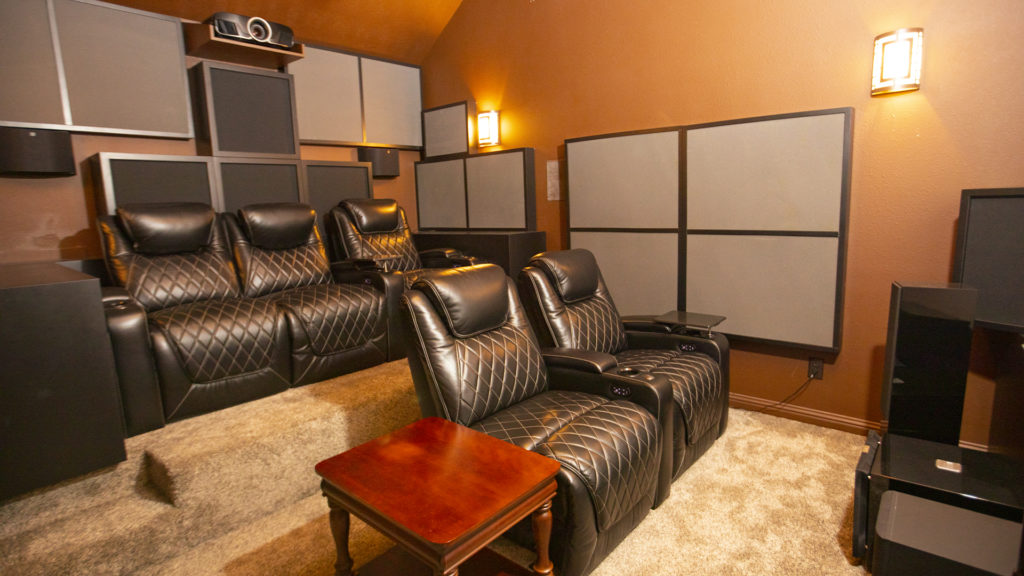
Absorption Requirements for Effective Reverberation Control
Home cinema wall panels must cover a certain percentage of each wall surface area and they must absorb enough energy in the 125 – 500 hz. frequency range, at least 75% on that range, in order to have a positive impact on speech intelligibility. Speech intelligibility is defined as to how many words in a ten word sentence can you hear.
Reverberation masks words and sounds by covering them with the distortions produced by the reflections. In most rooms, we try to achieve a SI index of 80 or higher. This means that one can clearly hear 8 out of 0 words within the sentences. Our brains can fill in the rest of the words after we have achieved a minimum of 80%.
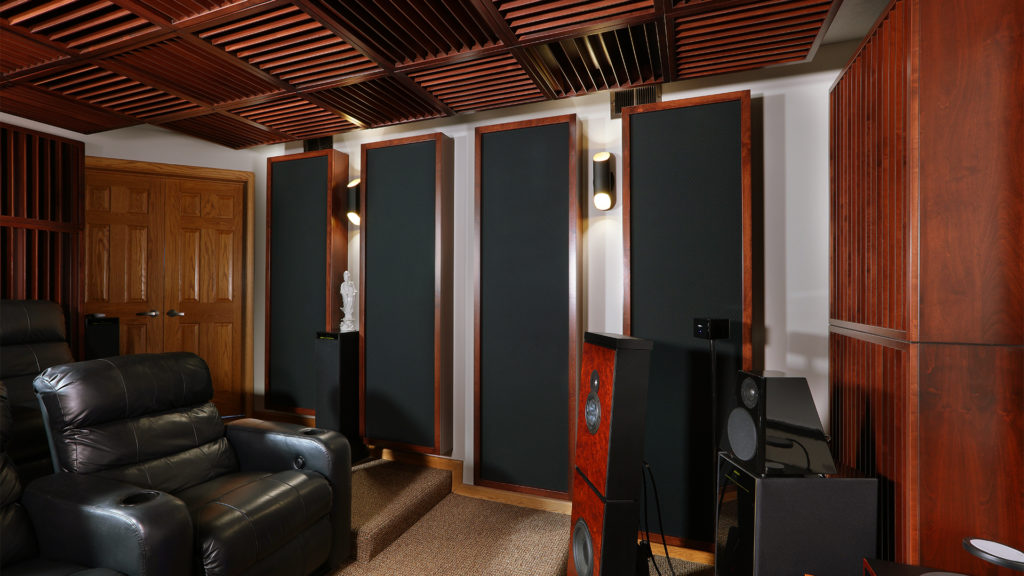
Avoiding Diffusion in Home Theater Reverb Management
Music and voice are treated differently when it comes to reverberation. Music by definition is more energy. Music can have a frequency range from 30 hz . – 20,000 hz. Voice frequency ranges are from 80 – 2,000 hz. With music, we must cover more surface area with absorption since we are dealing with a broader frequency range of energy and usually more amplitude or strength of that energy.
With voice, we can achieve good reverb times in small rooms. With music, it is much more difficult. With voice, we must focus on the 125 – 500 hz. frequency range ust as we must with music. The chief difference will be in the amount and surface area coverages required.
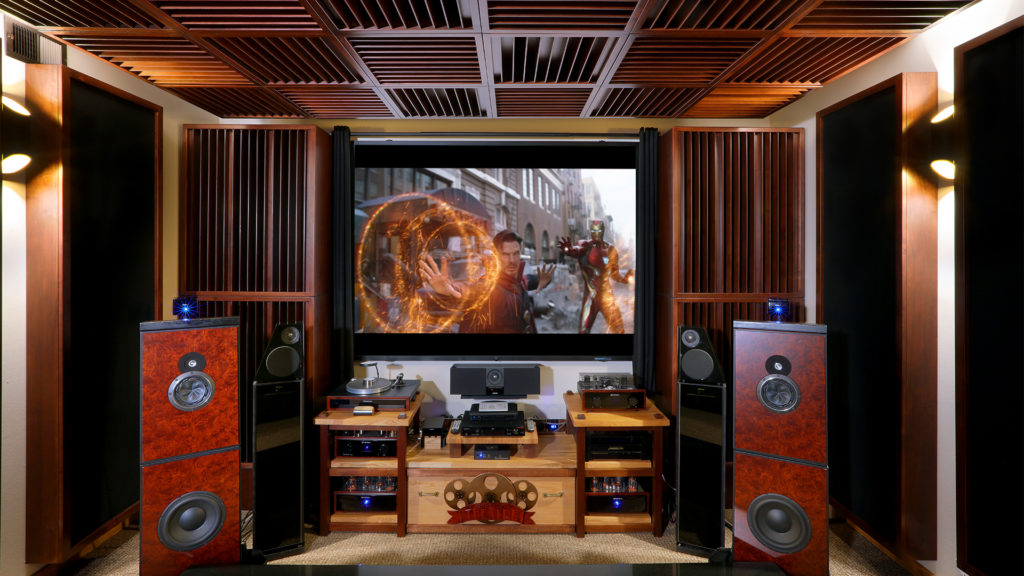
Speech Intelligibility and Its Importance in Home Cinemas
Home cinema wall panels can be installed on both side walls as a first objective. The sidewalls in any home theater setup will have a direct impact on speech intelligibility indexes. If you are on a budget and limited in the amount of home cinema wall panels you can use, focus on treating the sidewalls first. You need to increase the SI or speech intelligibility levels within your room in theaters when you have car crashes and explosions.
These occurrences produce large amounts of full range energy. That energy if not properly managed will overstay its welcome within your room. If an actor says something or there is dialogue of any kind, you will not hear it if your SI numbers are not high enough. Make sure you also treat the ceiling.


